- Joined
- Jul 27, 2009
- Messages
- 4,102
Before lab diamonds entered the market in large volume at affordable prices, near colorless synthetic Moissanite was king of the natural diamond alternatives. With its excellent hardness (9.25) and a refractive index and dispersion greater than diamond itself, Moissanite stood head and shoulders above all of the earlier diamond simulants such as Cubic Zirconia (CZ), spinel, white sapphire, synthetic rutile, strontium titanate, GGG, and YAG. Moissanite also created a stir when first released because it registers as diamond on the most common diamond testers in use – those that test for thermal conductivity.
But the rapid emergence of an affordable true synthetic diamond (aka lab grown diamond, lab created diamond, lab diamond, LGD), has reshuffled the deck in market for natural diamond alternatives. Lab diamonds are currently taking significant market share from natural diamonds, but they may pose an existential threat to the Moissanite market.
Frequently Asked Questions FAQ
Moissanite is silicon carbide, with atomic signature SiC. It is an extremely rare, naturally occurring substance discovered by Noble Prize winning scientist Henri Moissan in 1904 as he was exploring a meteor crater in Arizona. Synthetic Moissanite is the material we now know as a popular diamond simulant in the jewelry industry. Early production of synthetic silicon carbide, also known as carborundum, began in 1893 as an accident by Edward Acheson while trying to grow diamond. Since then, tons of silicon carbide (carborundum) have been produced for the abrasives industry by virtue of its extreme hardness. But commercial production of near colorless single crystal synthetic Moissanite for jewelry did not begin until 1998.
Natural occurrences of silicon carbide are extremely rare. Some of the early “finds” were even called into question because of possible contamination with synthetic material that was by then being used in many tools of the trade, such as saw blades.
One interesting factoid about natural Moissanite is that it was found as an inclusion in a diamond in 1986 (GIA article Gems and Gemology Winter 1997), which helped confirm the fact that it is a natural occurring mineral!
What makes Moissanite so popular?
The optical properties of near colorless Moissanite make it a brilliant and fiery faceted gem with outstanding hardness and durability. It has refractive indices over 2.64 which is higher than diamond (2.147) giving it excellent brilliance, and dispersion (0.104) far greater than diamond (0.044) which gives Moissanite exceptional fire (colored sparkles). With a hardness of 9.25 (harder than sapphire), Moissanite can hold up to daily wear as well as any gem not named diamond!
Is Moissanite a type of diamond?
Moissanite is not a diamond. It is silicon carbide (SiC) with different chemical, physical and optical properties. But those properties are close enough to make it a very good diamond simulant. In fact, synthetic Moissanite is considered the best diamond simulant on the market. Diamond simulants are not diamonds – by definition they only look like diamonds.
What is a Lab Diamond?
A lab diamond is a true synthetic diamond. It does not just look like a diamond, it IS a diamond -crystalized carbon with essentially the same chemical, physical and optical properties as natural diamond. A lab diamond, also known as a laboratory grown diamond or LGD, cannot be conclusively distinguished from a natural diamond by the naked eye. It has the potential to possess the same fire and brilliance as a natural diamond if the material has full transparency and it is well cut. Because a lab diamond is a diamond, it will register as diamond on the most widely used diamond testers in use today. A well-equipped and experienced jeweler or gemologist may be able to distinguish between a natural and lab grown diamond, but in some cases even they may have to refer a stone to a gemological laboratory for conclusive identification. Most lab diamonds on the market are laser inscribed as such on their girdles which gives both professionals and consumers an easy way to identify them.
What are the differences between Moissanite and Lab Diamonds?
Moissanite is silicon carbide (SiC), a diamond simulant made in a factory whereas a lab diamond is an actual diamond (C) made in a factory. While a lab diamond has essentially the same basic properties as natural diamond, Moissanite is a different material with different properties.
One of the most important differences between Moissanite and diamond (besides its atomic makeup) is in its optic character. Diamond is isotropic (singly refractive) and Moissanite is anisotropic (doubly refractive). Because Moissanite has two different refractive indices that vary depending on orientation of the optic axis, a telltale doubling of facet edges can be seen from certain angles upon careful inspection. This makes identification of Moissanite, or at least separation from diamond, very easy for a jeweler, gemologist, or knowledgeable consumer.
Double refraction can also make the virtual facet patterns produced by Moissanite slightly blurry compared to diamond, and may account for why Moissanite appears slightly less brilliant than diamond even though it has a higher refractive index.
Another difference can sometimes be detected in body color. Most Moissanites on the market are in the near colorless range and their body color is a little different (sometimes grayish or greenish) than the typical yellow to brown hues of natural diamond. Lab diamonds can also sometimes have some odd color tinges that give clues to their synthetic origin. This is not a conclusive test since natural diamonds can also have similar color tinges.
Because of its very high dispersion, Moissanite (0.104) is capable of producing more fire than a natural or lab grown diamond (0.044). Fire is the result of light being fanned out into its spectral components by internal refraction and producing colored sparkles as the light exits the crown of the diamond back to the eye of the observer. Cut quality has a big impact on how much fire is seen, but if both are well cut a Moissanite will produce more colored sparkles than will a diamond.
Moissanite has a slightly lower specific gravity (3.22) than diamond (3.52) so it will weigh slightly less for a given volume. A well-proportioned round diamond of 6.50 mm in diameter will weigh approximately 1.00 carat whereas a Moissanite will weigh approximately 0.90 carat. Most other diamond simulants have specific gravity much greater than diamond, making them easy to distinguish just by putting them on a scale and comparing their size to their carat weight.
Does Moissanite fool a Diamond Tester?
Yes, in many cases. The least expensive and most common diamond testers on the market are based on thermal conductivity. Earlier simulated diamonds do not conduct heat as well as diamonds do and fairly simple devices had been developed for the diamond trade to give a yes/no result. That is, the device will indicate whether a stone is diamond or not, but cannot tell you what kind of simulant it is. Likewise, thermal testers cannot distinguish between natural diamond and lab diamonds, though there were very few lab diamonds in the market until relatively recently. Since there is overlap in the property of thermal inertia between Moissanite and diamond, a Moissanite will read as diamond on these testers.
More recently new devices have been developed to be used in conjunction with a thermal tester that would more conclusively identify Moissanite.
Can a Lab Diamond test as Moissanite?
Yes, some lab diamonds on some testers can return a positive result for Moissanite. The best commonly used testers today feature both a thermal conductivity probe and an electrical conductivity probe. Moissanite overlaps with diamond in range of thermal conductivity, so a false positive for diamond is commonly generated by Moissanite on thermal testers. Because diamond and Moissanite generally differ significantly in electrical conductivity – diamond is less conductive and Moissanite more – this second test can make the separation. However, some lab diamonds have enough metallic inclusions or trace impurities (boron in particular) to give lab diamonds electrical conductivity overlapping with Moissanite. Thus, in some cases a lab diamond may test as Moissanite. Fortunately, visual inspection by a knowledgeable jeweler can reveal this false positive, as Moissanite is doubly refractive and facet doubling can be seen when viewed in certain directions.
Is a Moissanite better than a Lab Diamond?
In only one respect can a Moissanite be considered to be objectively better than a lab diamond – it has more fire. A well-cut, high quality Moissanite will exhibit more colored sparkles than a comparable natural or lab diamond. That is because Moissanite is much higher in the optical property of dispersion – a crystal’s prismatic ability to separate white light out into its individual color components. Other than that, Moissanite is softer and less durable than diamond (though harder than most gems), it is doubly refractive which can make facet reflections a little blurry and diminish brilliance somewhat compared to diamond. It is also much easier for someone with a little bit of knowledge to distinguish from a real diamond, either lab grown or natural. And with the rapidly falling prices of lab diamonds, Moissanite might lose the advantage of affordability.
Moissanite vs Lab Diamond Pricing
Before Lab diamonds emerged on the market Moissanite was the high-quality, low-cost alternative to natural diamonds. Initially, even lab diamonds were more expensive and Moissanite continued to enjoy a price advantage. But as the supply of lab grown diamond has increased the market prices have continued to drop. And Moissanite prices have felt the pressure. Today prices are roughly comparable in mainstream sizes. It is hard to imagine that any diamond simulant, no matter good, could command prices higher than a lab diamond. It seems likely that Moissanite will continue to give way to lab diamonds.
What will happen to the Moissanite market due to Lab Diamonds?
Moissanite has developed a following of ardent admirers because it resembles diamond more closely than any previous diamond simulants. Many fans even feel that it has a distinctive look that is preferable to lab diamonds, presumably because of abundant fire. But it is hard to think that the emergence of large volumes of low-cost lab diamonds on the market won’t squeeze Moissanite into the same market category as the other simulants that have come before. Materials that looked like natural diamonds became popular based on how close to the desirable properties of diamond they came, but lab diamonds ARE diamonds with essentially the same properties of natural diamond. And as a technology product produced worldwide, lab diamonds are rapidly becoming bigger and cheaper. Moissanite has been a model of controlled production and careful marketing, but this might not be enough to stave off the lab diamond wave. The original source and most high profile seller of Moissanite is also now selling lab grown diamonds, which suggests they are hedging their bets.
Conclusion
Lab diamonds are real diamonds with essentially the same chemical, physical and optical properties as natural diamonds. Synthetic Moissanite is a diamond simulant with different chemical makeup and properties than diamond. While Moissanite is arguably the best diamond simulant with a combination of hardness, fire, brilliance, and affordability, the emergence of lab grown diamonds in ever- greater quantities, sizes and qualities with rapidly falling prices, may spell an end to the heyday that Moissanite has enjoyed since its introduction into the jewelry market some 25 years ago.
But the rapid emergence of an affordable true synthetic diamond (aka lab grown diamond, lab created diamond, lab diamond, LGD), has reshuffled the deck in market for natural diamond alternatives. Lab diamonds are currently taking significant market share from natural diamonds, but they may pose an existential threat to the Moissanite market.
Frequently Asked Questions FAQ
- What is Moissanite?
- What makes Moissanite so popular?
- Is Moissanite a Type of Diamond?
- What is a Lab Diamond?
- What are the differences between Moissanite and Lab Diamonds?
- Does Moissanite fool a diamond tester?
- Can a Lab Diamond test as a Moissanite?
- Is a Moissanite better than a Lab Diamond?
- Moissanite vs Lab Diamond Pricing
- What will happen to Moissanite due to Lab Diamonds?
Moissanite is silicon carbide, with atomic signature SiC. It is an extremely rare, naturally occurring substance discovered by Noble Prize winning scientist Henri Moissan in 1904 as he was exploring a meteor crater in Arizona. Synthetic Moissanite is the material we now know as a popular diamond simulant in the jewelry industry. Early production of synthetic silicon carbide, also known as carborundum, began in 1893 as an accident by Edward Acheson while trying to grow diamond. Since then, tons of silicon carbide (carborundum) have been produced for the abrasives industry by virtue of its extreme hardness. But commercial production of near colorless single crystal synthetic Moissanite for jewelry did not begin until 1998.
Natural occurrences of silicon carbide are extremely rare. Some of the early “finds” were even called into question because of possible contamination with synthetic material that was by then being used in many tools of the trade, such as saw blades.
One interesting factoid about natural Moissanite is that it was found as an inclusion in a diamond in 1986 (GIA article Gems and Gemology Winter 1997), which helped confirm the fact that it is a natural occurring mineral!
What makes Moissanite so popular?
The optical properties of near colorless Moissanite make it a brilliant and fiery faceted gem with outstanding hardness and durability. It has refractive indices over 2.64 which is higher than diamond (2.147) giving it excellent brilliance, and dispersion (0.104) far greater than diamond (0.044) which gives Moissanite exceptional fire (colored sparkles). With a hardness of 9.25 (harder than sapphire), Moissanite can hold up to daily wear as well as any gem not named diamond!
Is Moissanite a type of diamond?
Moissanite is not a diamond. It is silicon carbide (SiC) with different chemical, physical and optical properties. But those properties are close enough to make it a very good diamond simulant. In fact, synthetic Moissanite is considered the best diamond simulant on the market. Diamond simulants are not diamonds – by definition they only look like diamonds.
What is a Lab Diamond?
A lab diamond is a true synthetic diamond. It does not just look like a diamond, it IS a diamond -crystalized carbon with essentially the same chemical, physical and optical properties as natural diamond. A lab diamond, also known as a laboratory grown diamond or LGD, cannot be conclusively distinguished from a natural diamond by the naked eye. It has the potential to possess the same fire and brilliance as a natural diamond if the material has full transparency and it is well cut. Because a lab diamond is a diamond, it will register as diamond on the most widely used diamond testers in use today. A well-equipped and experienced jeweler or gemologist may be able to distinguish between a natural and lab grown diamond, but in some cases even they may have to refer a stone to a gemological laboratory for conclusive identification. Most lab diamonds on the market are laser inscribed as such on their girdles which gives both professionals and consumers an easy way to identify them.
What are the differences between Moissanite and Lab Diamonds?
Moissanite is silicon carbide (SiC), a diamond simulant made in a factory whereas a lab diamond is an actual diamond (C) made in a factory. While a lab diamond has essentially the same basic properties as natural diamond, Moissanite is a different material with different properties.
One of the most important differences between Moissanite and diamond (besides its atomic makeup) is in its optic character. Diamond is isotropic (singly refractive) and Moissanite is anisotropic (doubly refractive). Because Moissanite has two different refractive indices that vary depending on orientation of the optic axis, a telltale doubling of facet edges can be seen from certain angles upon careful inspection. This makes identification of Moissanite, or at least separation from diamond, very easy for a jeweler, gemologist, or knowledgeable consumer.
Double refraction can also make the virtual facet patterns produced by Moissanite slightly blurry compared to diamond, and may account for why Moissanite appears slightly less brilliant than diamond even though it has a higher refractive index.
Another difference can sometimes be detected in body color. Most Moissanites on the market are in the near colorless range and their body color is a little different (sometimes grayish or greenish) than the typical yellow to brown hues of natural diamond. Lab diamonds can also sometimes have some odd color tinges that give clues to their synthetic origin. This is not a conclusive test since natural diamonds can also have similar color tinges.
Because of its very high dispersion, Moissanite (0.104) is capable of producing more fire than a natural or lab grown diamond (0.044). Fire is the result of light being fanned out into its spectral components by internal refraction and producing colored sparkles as the light exits the crown of the diamond back to the eye of the observer. Cut quality has a big impact on how much fire is seen, but if both are well cut a Moissanite will produce more colored sparkles than will a diamond.
Moissanite has a slightly lower specific gravity (3.22) than diamond (3.52) so it will weigh slightly less for a given volume. A well-proportioned round diamond of 6.50 mm in diameter will weigh approximately 1.00 carat whereas a Moissanite will weigh approximately 0.90 carat. Most other diamond simulants have specific gravity much greater than diamond, making them easy to distinguish just by putting them on a scale and comparing their size to their carat weight.
Does Moissanite fool a Diamond Tester?
Yes, in many cases. The least expensive and most common diamond testers on the market are based on thermal conductivity. Earlier simulated diamonds do not conduct heat as well as diamonds do and fairly simple devices had been developed for the diamond trade to give a yes/no result. That is, the device will indicate whether a stone is diamond or not, but cannot tell you what kind of simulant it is. Likewise, thermal testers cannot distinguish between natural diamond and lab diamonds, though there were very few lab diamonds in the market until relatively recently. Since there is overlap in the property of thermal inertia between Moissanite and diamond, a Moissanite will read as diamond on these testers.
More recently new devices have been developed to be used in conjunction with a thermal tester that would more conclusively identify Moissanite.
Can a Lab Diamond test as Moissanite?
Yes, some lab diamonds on some testers can return a positive result for Moissanite. The best commonly used testers today feature both a thermal conductivity probe and an electrical conductivity probe. Moissanite overlaps with diamond in range of thermal conductivity, so a false positive for diamond is commonly generated by Moissanite on thermal testers. Because diamond and Moissanite generally differ significantly in electrical conductivity – diamond is less conductive and Moissanite more – this second test can make the separation. However, some lab diamonds have enough metallic inclusions or trace impurities (boron in particular) to give lab diamonds electrical conductivity overlapping with Moissanite. Thus, in some cases a lab diamond may test as Moissanite. Fortunately, visual inspection by a knowledgeable jeweler can reveal this false positive, as Moissanite is doubly refractive and facet doubling can be seen when viewed in certain directions.
Is a Moissanite better than a Lab Diamond?
In only one respect can a Moissanite be considered to be objectively better than a lab diamond – it has more fire. A well-cut, high quality Moissanite will exhibit more colored sparkles than a comparable natural or lab diamond. That is because Moissanite is much higher in the optical property of dispersion – a crystal’s prismatic ability to separate white light out into its individual color components. Other than that, Moissanite is softer and less durable than diamond (though harder than most gems), it is doubly refractive which can make facet reflections a little blurry and diminish brilliance somewhat compared to diamond. It is also much easier for someone with a little bit of knowledge to distinguish from a real diamond, either lab grown or natural. And with the rapidly falling prices of lab diamonds, Moissanite might lose the advantage of affordability.
Moissanite vs Lab Diamond Pricing
Before Lab diamonds emerged on the market Moissanite was the high-quality, low-cost alternative to natural diamonds. Initially, even lab diamonds were more expensive and Moissanite continued to enjoy a price advantage. But as the supply of lab grown diamond has increased the market prices have continued to drop. And Moissanite prices have felt the pressure. Today prices are roughly comparable in mainstream sizes. It is hard to imagine that any diamond simulant, no matter good, could command prices higher than a lab diamond. It seems likely that Moissanite will continue to give way to lab diamonds.
What will happen to the Moissanite market due to Lab Diamonds?
Moissanite has developed a following of ardent admirers because it resembles diamond more closely than any previous diamond simulants. Many fans even feel that it has a distinctive look that is preferable to lab diamonds, presumably because of abundant fire. But it is hard to think that the emergence of large volumes of low-cost lab diamonds on the market won’t squeeze Moissanite into the same market category as the other simulants that have come before. Materials that looked like natural diamonds became popular based on how close to the desirable properties of diamond they came, but lab diamonds ARE diamonds with essentially the same properties of natural diamond. And as a technology product produced worldwide, lab diamonds are rapidly becoming bigger and cheaper. Moissanite has been a model of controlled production and careful marketing, but this might not be enough to stave off the lab diamond wave. The original source and most high profile seller of Moissanite is also now selling lab grown diamonds, which suggests they are hedging their bets.
Conclusion
Lab diamonds are real diamonds with essentially the same chemical, physical and optical properties as natural diamonds. Synthetic Moissanite is a diamond simulant with different chemical makeup and properties than diamond. While Moissanite is arguably the best diamond simulant with a combination of hardness, fire, brilliance, and affordability, the emergence of lab grown diamonds in ever- greater quantities, sizes and qualities with rapidly falling prices, may spell an end to the heyday that Moissanite has enjoyed since its introduction into the jewelry market some 25 years ago.

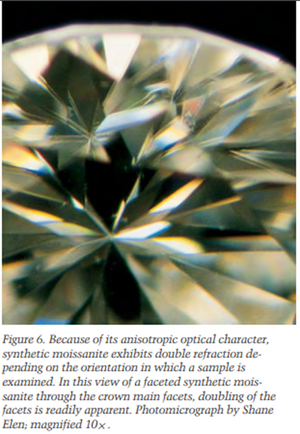

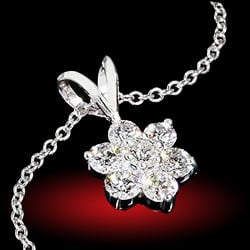
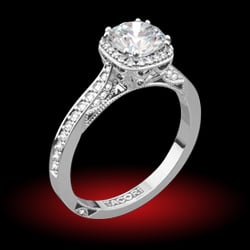
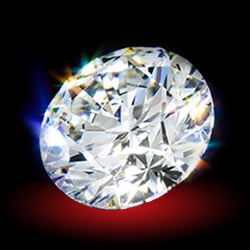
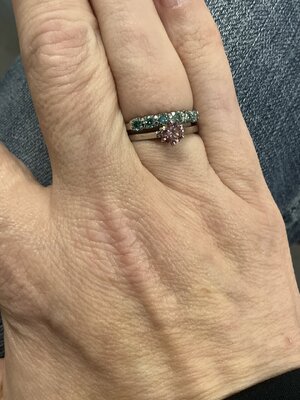


300x240.png)